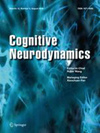期刊简介
Journal Title:Cognitive Neurodynamics
Cognitive Neurodynamics provides a unique forum of communication and cooperation for scientists and engineers working in the field of cognitive neurodynamics, intelligent science and applications, bridging the gap between theory and application, without any preference for pure theoretical, experimental or computational models.
The emphasis is to publish original models of cognitive neurodynamics, novel computational theories and experimental results. In particular, intelligent science inspired by cognitive neuroscience and neurodynamics is also very welcome.
The scope of Cognitive Neurodynamics covers cognitive neuroscience, neural computation based on dynamics, computer science, intelligent science as well as their interdisciplinary applications in the natural and engineering sciences. Papers that are appropriate for non-specialist readers are encouraged.
1. There is no page limit for manuscripts submitted to Cognitive Neurodynamics. Research papers should clearly represent an important advance of especially broad interest to researchers and technologists in neuroscience, biophysics, BCI, neural computer and intelligent robotics.
2. Cognitive Neurodynamics also welcomes brief communications: short papers reporting results that are of genuinely broad interest but that for one reason and another do not make a sufficiently complete story to justify a full article publication. Brief Communications should consist of approximately four manuscript pages.
3. Cognitive Neurodynamics publishes review articles in which a specific field is reviewed through an exhaustive literature survey. There are no restrictions on the number of pages. Review articles are usually invited, but submitted reviews will also be considered.
中文简介
《认知神经动力学》为认知神经动力学、智能科学和应用领域的科学家和工程师提供了一个独特的交流与合作论坛,弥合了理论与应用之间的鸿沟,不偏向纯理论、实验或计算模型。
重点是发表认知神经动力学的原始模型、新颖的计算理论和实验结果。特别是,受认知神经科学和神经动力学启发的智能科学也非常受欢迎。
《认知神经动力学》的范围涵盖认知神经科学、基于动力学的神经计算、计算机科学、智能科学以及它们在自然科学和工程科学中的跨学科应用。鼓励提交适合非专业读者的论文。
1. 提交给《认知神经动力学》的稿件没有页数限制。研究论文应清楚地代表神经科学、生物物理学、BCI、神经计算机和智能机器人领域的研究人员和技术人员特别广泛关注的重要进展。
2.认知神经动力学也欢迎简短的交流:报告真正引起广泛兴趣但因种种原因而无法构成完整故事以证明整篇文章发表的简短论文。简短交流应包含大约四页手稿。
3. 认知神经动力学发表通过详尽的文献调查回顾特定领域的评论文章。对页数没有限制。通常会邀请评论文章,但提交的评论也会被考虑。
期刊点评
Cognitive Neurodynamics创刊于2007年,由Springer Netherlands出版商出版,收稿方向涵盖医学 - 神经科学全领域,此刊是中等级别的SCI期刊,所以过审相对来讲不是特别难,但是该刊专业认可度不错,仍然是一本值得选择的SCI期刊 。平均审稿速度 约2月 ,影响因子指数3.1,该期刊近期没有被列入国际期刊预警名单,广大学者值得一试。
中科院分区(数据版本:2023年12月升级版)
| 大类学科 | 分区 | 小类学科 | 分区 | Top期刊 | 综述期刊 |
| 工程技术 | 3区 | NEUROSCIENCES 神经科学 | 3区 | 否 | 否 |
名词解释:
中科院分区也叫中科院JCR分区,基础版分为13个大类学科,然后按照各类期刊影响因子分别将每个类别分为四个区,影响因子5%为1区,6%-20%为2区,21%-50%为3区,其余为4区。
中科院分区(数据版本:2022年12月升级版)
| 大类学科 | 分区 | 小类学科 | 分区 | Top期刊 | 综述期刊 |
| 工程技术 | 2区 | NEUROSCIENCES 神经科学 | 3区 | 否 | 否 |
中科院分区(数据版本:2021年12月旧的升级版)
| 大类学科 | 分区 | 小类学科 | 分区 | Top期刊 | 综述期刊 |
| 工程技术 | 2区 | NEUROSCIENCES 神经科学 | 2区 | 否 | 否 |
中科院分区(数据版本:2021年12月基础版)
| 大类学科 | 分区 | 小类学科 | 分区 | Top期刊 | 综述期刊 |
| 工程技术 | 2区 | NEUROSCIENCES 神经科学 | 3区 | 否 | 否 |
中科院分区(数据版本:2021年12月升级版)
| 大类学科 | 分区 | 小类学科 | 分区 | Top期刊 | 综述期刊 |
| 工程技术 | 2区 | NEUROSCIENCES 神经科学 | 2区 | 否 | 否 |
中科院分区(数据版本:2020年12月旧的升级版)
| 大类学科 | 分区 | 小类学科 | 分区 | Top期刊 | 综述期刊 |
| 工程技术 | 1区 | NEUROSCIENCES 神经科学 | 2区 | 是 | 否 |
WOS分区(数据版本:2023-2024年最新版)
| 按JIF指标学科分区 | 收录子集 | 分区 | 排名 | 百分位 |
| 学科:NEUROSCIENCES | SCIE | Q2 | 136 / 310 |
56.3% |
| 按JCI指标学科分区 | 收录子集 | 分区 | 排名 | 百分位 |
| 学科:NEUROSCIENCES | SCIE | Q2 | 121 / 310 |
61.13% |
名词解释:
WOS即Web of Science,是全球获取学术信息的重要数据库,Web of Science包括自然科学、社会科学、艺术与人文领域的信息,来自全世界近9,000种最负盛名的高影响力研究期刊及12,000多种学术会议多学科内容。给期刊分区时会按照某一个学科领域划分,根据这一学科所有按照影响因子数值降序排名,然后平均分成4等份,期刊影响因子值高的就会在高分区中,最后的划分结果分别是Q1,Q2,Q3,Q4,Q1代表质量最高。
CiteScore分区(数据版本:2024年最新版)
| CiteScore | SJR | SNIP | CiteScore排名 | ||||||||
| 6.9 | 0.762 | 1.185 |
|
名词解释:
CiteScore:衡量期刊所发表文献的平均受引用次数。
SJR:SCImago 期刊等级衡量经过加权后的期刊受引用次数。引用次数的加权值由施引期刊的学科领域和声望 (SJR) 决定。
SNIP:每篇文章中来源出版物的标准化影响将实际受引用情况对照期刊所属学科领域中预期的受引用情况进行衡量。
其他数据
| 是否OA开放访问: | h-index: | 年文章数: |
| 未开放 | 33 | 121 |
| Gold OA文章占比: | 2021-2022最新影响因子(数据来源于搜索引擎): | 开源占比(OA被引用占比): |
| 15.28% | 3.1 | 0.12... |
| 研究类文章占比:文章 ÷(文章 + 综述) | 期刊收录: | 中科院《国际期刊预警名单(试行)》名单: |
| 94.21% | SCIE | 否 |
历年IF值(影响因子):
历年引文指标和发文量:
发文统计
2023-2024国家/地区发文量统计:
| 国家/地区 | 数量 |
| CHINA MAINLAND | 90 |
| USA | 21 |
| Iran | 20 |
| Turkey | 17 |
| India | 12 |
| Canada | 9 |
| Japan | 9 |
| Australia | 8 |
| France | 8 |
| Italy | 7 |
2023-2024机构发文量统计:
| 机构 | 数量 |
| EAST CHINA UNIVERSITY OF SCIENCE... | 12 |
| HANGZHOU DIANZI UNIVERSITY | 8 |
| CHINESE ACADEMY OF SCIENCES | 7 |
| BEIJING NORMAL UNIVERSITY | 5 |
| CENTRE NATIONAL DE LA RECHERCHE ... | 5 |
| ISLAMIC AZAD UNIVERSITY | 5 |
| SOUTHWEST UNIVERSITY - CHINA | 5 |
| AMIRKABIR UNIVERSITY OF TECHNOLO... | 4 |
| DAEGU NATL UNIV EDUC | 4 |
| HUAZHONG AGRICULTURAL UNIVERSITY | 4 |
相关期刊
| 同小类学科的其他优质期刊 | 影响因子 | 中科院分区 |
| Journal Of Energy Storage | 8.9 | 2区 |
| International Journal Of Ventilation | 1.1 | 4区 |
| Journal Of Environmental Chemical Engineering | 7.4 | 2区 |
| Complexity | 1.7 | 4区 |
| Chemical Engineering Journal | 13.3 | 1区 |
| Electronics | 2.6 | 3区 |
| International Journal Of Hydrogen Energy | 8.1 | 2区 |
| Aerospace | 2.1 | 3区 |
| Buildings | 3.1 | 3区 |
| Shock Waves | 1.7 | 4区 |
更多问题
免责声明
本站仅销售经国家新闻出版署批准的合法期刊,不是任何杂志官网,不涉及出版事务。本站仅提供有限咨询服务,需要用户自己向出版商投稿且没有绿色通道,是否录用一切以出版商通知为准。提及的第三方名称或商标,其知识产权均属于相应的出版商或期刊,本站与上述机构无从属关系,所有引用均出于解释服务内容的考量,符合商标法规范。本页信息均由法务团队进行把关,若期刊信息有任何问题,请联系在线客服,我们会认真核实处理。 若用户需要出版服务,请联系出版商:SPRINGER, VAN GODEWIJCKSTRAAT 30, DORDRECHT, NETHERLANDS, 3311 GZ。
